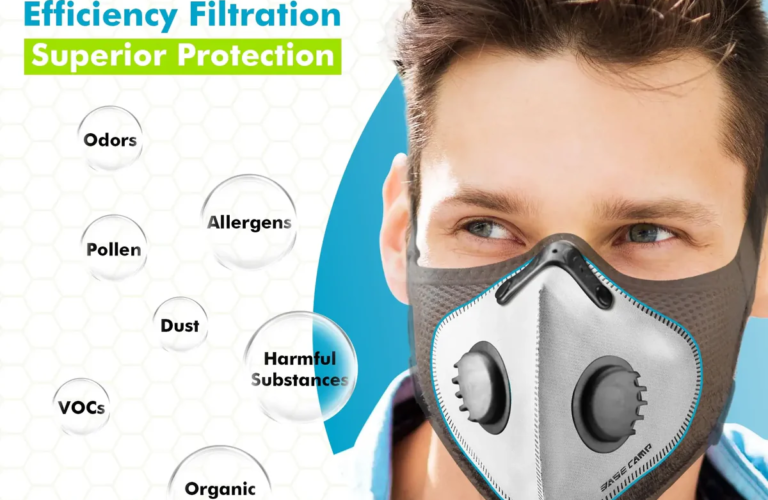If you spend a lot of time in woodworking, you’ve probably noticed the fine layer of wood dust that seems to settle on every surface—including your lungs. Whether you’re sanding, cutting, or routing, those airborne dust particles can pose serious health risks. That’s why a high-quality dust mask or respirator is an essential part of any woodworker’s safety gear.
But with so many options out there, you might be wondering: should you go with an N95 mask or a P100 respirator? What’s the difference, and which one provides the best balance between filtration, breathability, and comfort for continuous use? Let’s break it down.
Understanding N95 and P100 Ratings: What Do They Mean?
Before diving into which is best for woodworking, let’s clarify what these ratings actually mean.
N95 Mask: The Standard for General Dust Protection
- Filters 95% of airborne particulate that are 0.3 microns or larger.
- “N” means Not resistant to oil-based particles.
- Commonly used in construction, medical, and industrial applications.
- Often comes in disposable masks with an adjustable nose clip for a secure fit.
P100 Respirator: The Ultimate Dust Protection
- Filters 99.97% of airborne fine dust and contaminants as small as 0.3 microns.
- The “P” stands for oil-Proof, meaning it also blocks oil-based vapors and fumes.
- Typically found in half mask or full face designs with replaceable carbon filters.
- Provides superior protection for general woodworking and exposure to toxic wood species.
At first glance, the P100 respirator seems like the clear winner—but is it really the best choice for every woodworker?
N95 vs. P100: Which Wood Dust Mask Offers Better Protection?
When it comes to woodworking, the dust you generate isn’t just messy—it can be dangerous. Wood dust contains fine dust particles that, when inhaled over time, can lead to respiratory problems, allergic reactions, and even long-term lung diseases. Whether you’re an occasional DIY enthusiast or a full-time woodworker, choosing the right dust mask is essential for protecting your health.
The big question is: Should you go with an N95 or a P100 respirator? While both offer filtration against airborne particles, they differ in effectiveness, breathability, and cost. This guide will help you decide which is the better option for your woodworking needs.
Understanding N95 and P100 Ratings: What Do They Mean?
Both N95 and P100 masks fall under the National Institute for Occupational Safety and Health (NIOSH) classification for respirators. But what do those ratings mean?
- N95: Filters at least 95% of airborne particulates, including wood dust, pollen, and sanding debris. However, it does not protect against oil-based fumes.
- P100: Filters 99.97% of airborne particulates, including fine dust, allergens, and even organic vapors when used with carbon filters. It also protects against oil-based contaminants.
Essentially, P100 offers nearly total filtration, making it more effective than N95. But does that mean it’s the best choice for everyone? Let’s break it down further.
Which One is Best for Wood Dust Protection?
For general woodworking, both masks can provide good protection, but the right choice depends on your exposure level:
- Occasional DIY Projects: If you’re only doing light sanding or dust collection, an N95 face mask might be sufficient. It’s affordable, widely available, and filters most dust particles.
- Frequent Woodworkers: If you’re spending hours in the workshop, cutting, sanding, and shaping wood, a P100 respirator is a better investment. It offers higher filtration, blocks fine dust more effectively, and provides better protection in poorly ventilated spaces.
- High-Risk Work Environments: If you work with chemically treated woods, plywood, or MDF, a P100 half mask with carbon filters is essential. It will help protect you from harmful organic vapors and contaminants.
Winner: P100 is the better option for serious woodworkers, but N95 works for casual use.
Breathability vs. Protection: Which Filter Type is More Comfortable?
One major complaint about P100 respirators is that they can feel heavy and restrictive compared to N95 masks.
| Feature | N95 | P100 |
| Breathability | Easier to breathe through | More difficult due to high filtration |
| Weight | Lightweight | Can feel a little heavy |
| Fit | Adjustable nose clip for a good seal | Tight seal, but may require straps |
| Moisture Build-Up | More breathable, less moisture | Can feel damp after long use |
Many N95 disposable masks come with an exhalation valve, which improves breathability by reducing heat and moisture buildup. However, P100 masks are often made with silicone for a tighter seal, which can feel restrictive for long periods of continuous use.
Winner: N95 is more comfortable for short-term wear, but P100 provides better protection.
Cost Comparison: N95 vs. P100 Dust Masks
Another factor to consider is price.
- N95 masks are generally cheaper, costing between $1 to $3 per mask for disposable masks. They are ideal for those who need occasional protection and don’t want to invest in a reusable respirator.
- P100 respirators are more expensive, typically ranging from $20 to $50 for a reusable half mask plus replacement filters. The long-term cost can be higher, especially when factoring in carbon filters and replacement cartridges.
Winner: N95 is the more budget-friendly option, but P100 offers better value for heavy use.
Can You Use a Basic Surgical Mask for Wood Dust?
Some might wonder if a simple surgical face mask is enough for wood dust protection. The short answer? No.
Surgical masks are designed to protect against large dust particles and droplets, but they do not have the filtration capacity needed to block fine dust from woodworking. Unlike N95 or P100, they do not form a proper seal around your nose and mouth, allowing contaminants to slip through.
If you’re serious about woodworking safety, always choose a respirator designed for airborne particulate protection.
Final Verdict: Which Mask Should You Choose for Safety?
Here’s a quick summary:
- Choose N95 if you need a budget-friendly, breathable option for light sanding, occasional DIY, or short woodworking sessions.
- Choose P100 if you want the highest filtration, plan on working in the shop for extended hours, or deal with chemically treated woods.
For serious woodworkers, a P100 half mask respirator like the GVS Elipse P100 or RZ Mask M2.5 is the best investment. However, for casual DIY users, an N95 face mask like the 3M 8511 is a great choice.
At the end of the day, the best BASE CAMP dust mask is the one you’ll actually wear. Find a comfortable fit, ensure proper filtration, and keep your lungs protected while you create your next masterpiece.
Stay safe, and happy woodworking!



